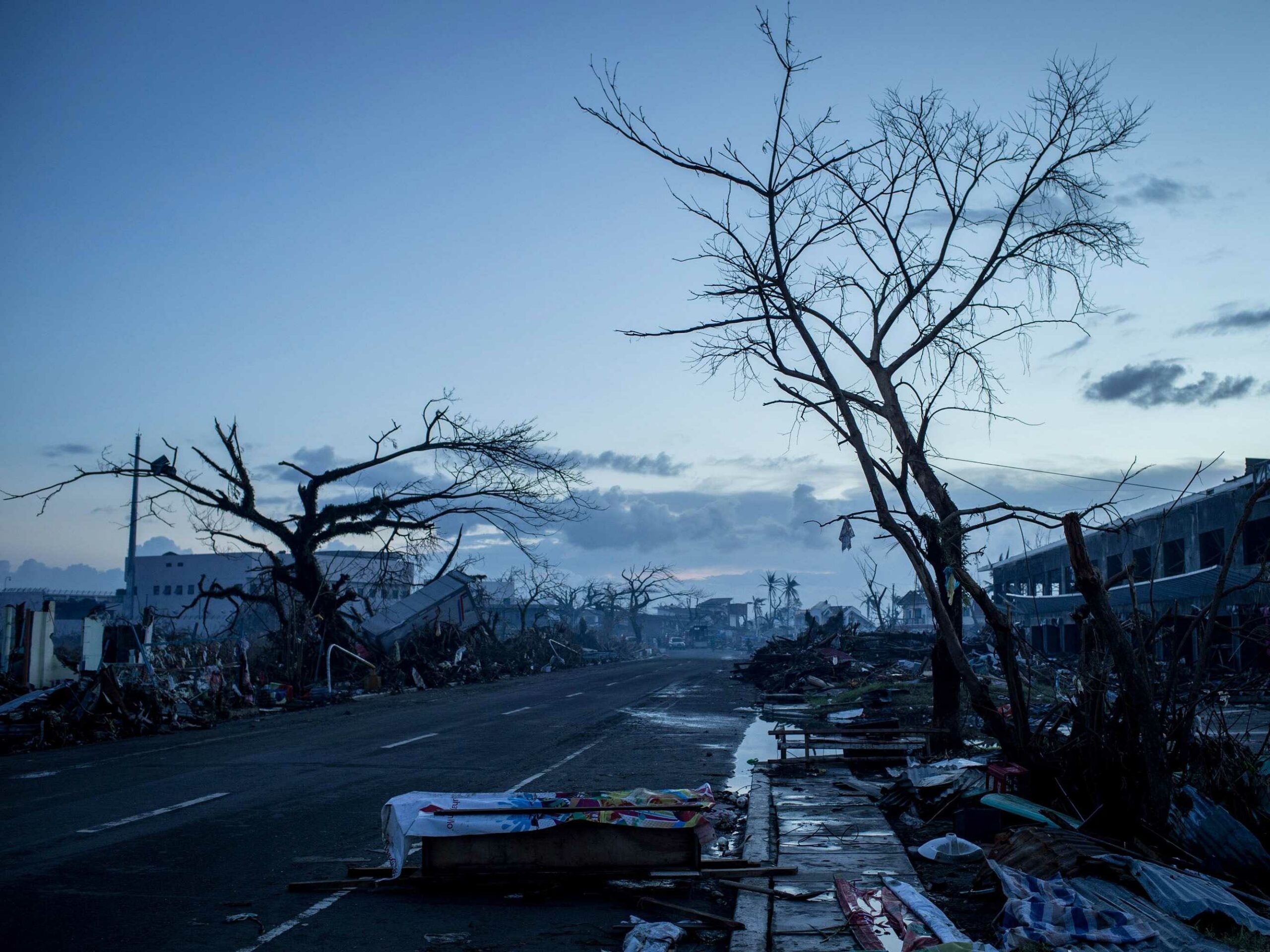In the aftermath of Typhoon Haiyan the damage, though not yet fully calculated, is clear. The storm ripped through the tiny island leveling nearly everything in its way – homes fell to scraps, hospitals and schools were destroyed, trees were splintered, and roads were hashed. Water supplies became muddled with sewage and a new environment formed, void of structure and wrought with parasites and bacteria, creating the perfect storm for disease.
The long-term impacts brought by disease are hard to gauge and hard to combat. In the Philippines, and other tropical environments that suffer a natural disaster, especially in developing countries where water supplies and sewage mix, outbreaks of bacterial diarrhea, cholera, dengue fever, hepatitis, malaria, typhoid fever and other diseases threaten another wave of destruction. The UN Office for the Coordination of Humanitarian Affairs (OCHA) reported on November 14th that these diseases and others have already been running through the island. Some diseases long forgotten, like polio, are predicted to resurge. (The World Health Organization (WHO) declared the Philippines as a polio-free region 14 years ago.) Acute respiratory infections and leptospirosis, a parasitic infection that ran rampant in Olongapo City in the northern Philippines earlier this fall due to flooding, are also expecting to spread. The Philippines is starting to seethe with a range of diseases brought on by Haiyan that could cripple the country for years to come.
The problem is that these diseases can live in the in-between: they lurk in the stew of disaster, in the wet fungus ridden wreckage, in the dead lying in the street, in the contaminated water, in the polluted air, in the blood-sucking insects. This environment cannot be vaccinated with a simple shot. And once a person leaves the healthcare facility – often one that is makeshift, thin in resources and thick in patients – they are vulnerable and quickly fall victim to disease. Yet, the diseases showing face in the Philippines are diseases that can be tamed by design. They rest in the crux of poorly constructed or altogether destroyed built environments where contamination is high.
Thus, post-disaster redevelopment in the Philippines, and elsewhere, has created a vital opportunity to build homes that can help curb and prevent the spread of infectious disease. Resilience often becomes the buzzword in post-disaster reconstruction. But long-term post-disaster reconstruction in the Philippines, and other developing countries recovering from natural disasters, has to go beyond building for the physical impacts of climate change. It is equally important that the global practices concerning long-term disaster relief efforts account for the long-term impacts of disease. If we are to rebuild the Philippines in the midst of this vulnerability, a new environment has to be built, and can be, where the risk of disease is curbed.

In the last decade alone natural disasters have been slicing through the globe at unrelenting speeds. The 2010 Haitian earthquake took the lives of 220,570 people. A million and a half were left homeless. Developing countries are less capable of withstanding these storms and mending the damage. When Chile suffered an earthquake in 2010, stronger than the one in Haiti, about 500 died and there are little reports of catastrophic diseases sweeping the nation. Almost four years after Haiti’s earthquake there are still 300,000 people living in temporary housing, and the death toll is arguably still rising from disease brought on and made stronger in the aftermath. The cholera epidemic is getting worse, tuberculosis (TB) is spreading and treatment options are slim.
TB is the second most fatal disease, behind HIV/AIDS, and highly dependent on its environment. Before the earthquake WHO identified nearly 30,000 new cases of TB annually – a respiratory disease made worse by environmental conditions such as those found in substandard housing. Now due to severe overcrowding in hospitals initiated by the earthquake, many TB patients have returned to the crowded urban environments where the disease is likely spreading untreated. In post-disaster developing countries such as Haiti and the Philippines, cost effective solutions that control infectious diseases need to reach beyond hospitals and control the environments where disease infects the vulnerable.
In the near future we may or may not have a clear prediction of what the long-term effects of disease will be in the Philippines in the aftermath of the greatest typhoon to have ever hit the country. It would be smart to take a cue from similar countries that have faced disasters of similar magnitudes and rebuild environments that can not only withstand the physical impacts of disaster but can stand up to the abiding health impacts as well. For that would be true resilience.
-Jaclyn Hersh, External Relations Officer
